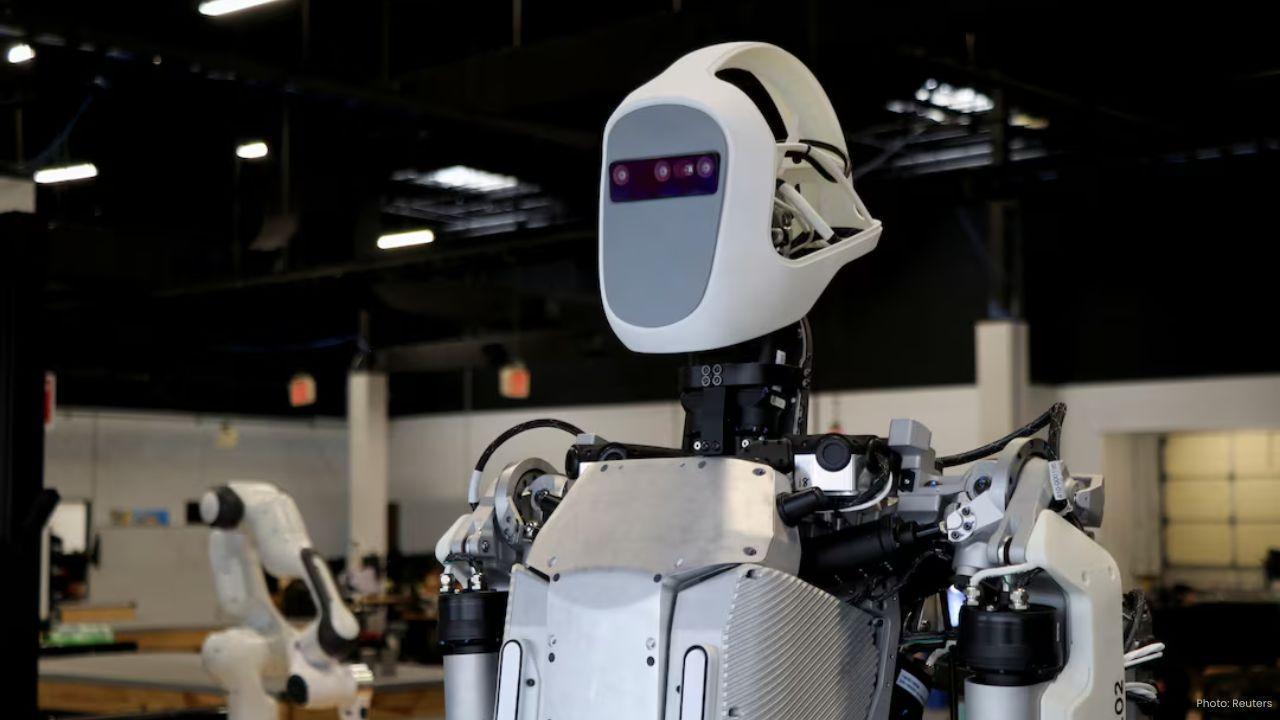
Post by : Meena Rani
In the modern world of industry and manufacturing, technology is evolving at an extraordinary pace. One of the most exciting developments is the collaboration between humans and robots, known as Human-Robot Collaboration (HRC). This approach is changing how factories and production lines operate, making them smarter, safer, and more efficient than ever before.
Human-robot collaboration is different from traditional automation. In older systems, robots worked in isolation, often separated from human workers by safety barriers. Humans handled tasks that required thinking, judgment, and skill, while robots focused on repetitive, heavy, or precise operations. Today, HRC enables humans and robots to work together side by side, sharing responsibilities and complementing each other’s strengths.
Understanding Human-Robot Collaboration
Human-Robot Collaboration involves human workers and robots sharing the same workspace and working on tasks together. Robots designed for this purpose are often called cobots, short for collaborative robots. Cobots are equipped with sensors, advanced software, and artificial intelligence that allow them to understand their surroundings, respond to human actions, and adjust their movements to ensure safety.
Unlike traditional robots, which might pose safety risks, cobots are designed to detect human presence. They can slow down, stop, or change direction if a human comes too close, reducing the risk of accidents. This makes HRC not only productive but also safe for employees.
How Cobots Transform Manufacturing
Enhancing Efficiency
Cobots handle repetitive, boring, or physically demanding tasks such as assembling products, moving materials, or performing quality checks. This frees up human workers to focus on tasks that require decision-making, creativity, and problem-solving. With cobots handling the repetitive tasks, production becomes faster, and mistakes are reduced.
Improving Safety
Workplace accidents are a significant concern in manufacturing. Cobots are designed to detect human presence and react in real-time, preventing collisions and injuries. By taking over dangerous tasks, such as lifting heavy materials or working with hazardous tools, cobots ensure that human workers remain safe while maintaining high production levels.
Boosting Productivity
Cobots do not need breaks, sleep, or shifts. They can operate continuously, maintaining a steady production pace. Working alongside humans, cobots also reduce downtime by handling tasks that slow down human workers. This combination of human judgment and robotic precision results in higher output and consistent product quality.
The Role of Artificial Intelligence
Artificial Intelligence is a key element in Human-Robot Collaboration. AI allows cobots to learn from their environment, make decisions, and adapt to changes in real-time. Cobots can identify objects, understand human gestures, and even predict problems on the production line before they occur.
This intelligence ensures that humans and robots work together seamlessly. For example, if a human worker accidentally places a part in the wrong position, a cobot can detect it and adjust its action, preventing errors and maintaining efficiency. AI-driven cobots are not just machines; they are smart partners in the manufacturing process.
Global Adoption of Human-Robot Collaboration
Many industries around the world are adopting HRC to stay competitive and meet modern production demands. Automotive, electronics, and consumer goods industries are some of the sectors benefiting the most.
Automobile manufacturers, for instance, use cobots for assembling car parts, checking quality, and painting surfaces. Electronics companies use cobots to handle delicate components, ensuring precision and speed. By integrating cobots into their production lines, companies achieve faster production cycles, reduced costs, and higher quality output.
The Future of Human-Robot Collaboration
The potential of Human-Robot Collaboration is enormous. Future advancements in AI, robotics, and machine learning are expected to make cobots even smarter and capable of handling more complex tasks.
Humans bring creativity, judgment, and problem-solving, while robots bring speed, precision, and endurance. Together, they create a production environment that is efficient, safe, and adaptable. As industries continue to embrace HRC, manufacturing will become more flexible, innovative, and capable of meeting growing global demands.
Human-Robot Collaboration is not just a technological trend; it is a transformation in the way manufacturing works. By integrating cobots alongside human workers, industries can achieve higher efficiency, better safety, and greater productivity.
The partnership between humans and robots is shaping the future of manufacturing. As technology continues to improve, this collaboration will play a crucial role in making factories smarter, safer, and more productive than ever before. The era of Human-Robot Collaboration is here, and it promises a bright and efficient future for industries around the world.
Human-Robot Collaboration, Cobots, Manufacturing Efficiency, Artificial Intelligence










Bengaluru-Mumbai Superfast Train Approved After 30-Year Wait
Railways approves new superfast train connecting Bengaluru and Mumbai, ending a 30-year demand, easi

Canada Post Workers Strike Halts Nationwide Mail and Parcel Services
Canada Post halts operations as CUPW strike disrupts mail and parcel delivery nationwide amid disput

PM Modi Launches BSNL ‘Swadeshi’ 4G Network, 97,500 Towers Built
India enters global telecom league as PM Modi inaugurates BSNL’s indigenous 4G, connecting 26,700 vi

India’s Iconic MiG‑21 Takes Final Flight After Six Decades of Service
After 60 years India retires its MiG‑21 fighter jet, a legendary yet controversial warplane marking

Hindustan Zinc unveils AI hotspot monitoring at Debari smelter
Hindustan Zinc launches AI-powered Switchyard Hotspot Monitoring at Debari smelter to cut outages bo

Chinese experts worked inside sanctioned Russian drone plant
Chinese drone specialists visited IEMZ Kupol supplying parts and drones via intermediaries, deepenin